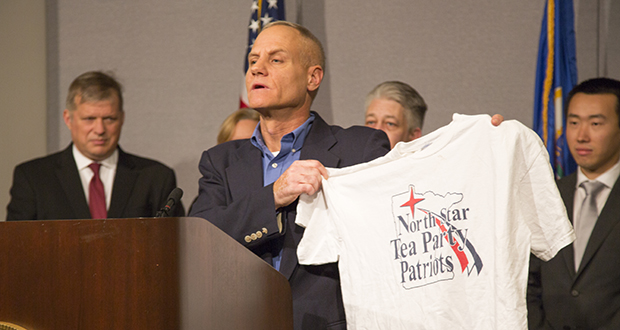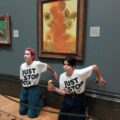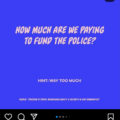
On April 15, 2019, thousands of climate activists from the Extinction Rebellion in London joined together to partake in several demonstrations across the city, all of which took place in unique and interesting artistic forms. These demonstrations lasted a full ten days, causing major disruptions throughout London due to the sheer amount of protestors flocking the city’s busiest locations. In this article, I will be discussing the novel artistic tactics that Extinction Rebellion utilized during the London demonstrations of 2019 to force their urgent messages onto the general public.
To provide some context for those who are unfamiliar, Extinction Rebellion is an international global environment movement that was founded in the United Kingdom in 2018. Because they believe that life on Earth is facing mass extinction, Extinction Rebellion aims to organize nonviolent civil disruptions in order to grab the government’s attention and urge them to make decisions that will combat climate change. Some of their demands include policies that legally bind the government to reduce UK carbon emissions to net zero by 2025, as well as forming a citizen’s assembly to oversee the government’s progression toward their goals.
Extinction Rebellion had attempted to organize protests before, but none drew the government’s attention to the extent they needed to make change. Members had enough of being ignored by their government, and the group’s anger and pleas for attention culminated in the ten day protest in London that began on April 15, 2019. In the days leading up to the demonstrations, leaders encouraged citizens to flock to five major high-profile locations throughout the city and to prepare to camp out for their beliefs. In response, thousands of activists successfully blocked roads at the Marble Arch, Waterloo Bridge, Parliament Square, Piccadilly Circus, and Oxford Circus.

This may sound like a typical, well-organized civilian protest against a government’s inaction toward climate change; however, activists of Extinction Rebellion took it one step further by utilizing art to emphasize their desperation and seriousness of the situation. One of these art pieces involved hauling a giant pink party boat into the middle of Oxford Circus, which is an intersection with high levels of daily foot traffic. In short, the boat served as a large DJ booth, blasting music for five days straight while the painted-on phrase “Tell the Truth” on the side of the boat glared out at the audience. The organizers of the Rebellion could have simply brought out a banner with the words “Tell the Truth,” but instead they chose to have the phrase inscribed on a pink party boat. This was an intentional and extremely effective decision on their part, as it not only grabs people’s attention much more than a banner would, but it also refers to the pollution that boats emit into the ocean and atmosphere. The phrase scrawled across the boat’s hull alludes to the group’s wishes that the government tell the truth about the Earth’s state of climate emergency, and that action needs to be taken into effect immediately.
Another exhibit involved supporters staging massive die-ins at popular public spaces, such as the Natural History Museum in London. About 100 activists lay prostrate on the ground underneath the blue whale skeleton in the main hall for 30 minutes to signify the mass extinctions that occur due to climate change and pollution. Once again, the medium they chose to send this message has great importance and further emphasized their beliefs, gaining more attention from the public than would a typical protest. Witnessing over a hundred people lay in stillness and silence on the floor underneath a whale skeleton must have been a jarring and profound sight to those who saw it. Their message could not come across any clearer: human contribution to climate change is mass murdering animals.
A third demonstration during the ten day protest included several activists supergluing themselves to the roof and sides of London trains, while two individuals dressed in suits stood on the train while holding up a bright orange banner with the phrases “Climate Emergency” and “Act Now.” This caused major disruptions in the city’s overground train network. The group titled this demonstration “The Pause,” just as a work of art is given a title. The Pause encouraged city goers to stop and think about how their actions are harming the environment and life on Earth. Although this specific demonstration did not witness huge crowds forming to see the disruption, its message was no less impactful than the others.
Overall, Extinction Rebellion utilized various artistic techniques to draw attention to their messages, effectively separating themselves from the types of activist protests we typically see. Their complete dedication to grabbing the public’s eye caused an entire city to be made aware of the utmost importance to address the impact of climate change. Art is such a unique and powerful tool for expressing one’s beliefs, as it urges people to self-reflect on their own thoughts and actions. By choosing to display their demonstrations in an artistic way, Extinction Rebellion was able to make their messages so much more impactful than regular protests. Even though their efforts did not push the government to abide by their wishes, they succeeded in forcing Londoners to think about the effects of climate change and understand the urgency in which the situation must be addressed.








Hi! I thought this topic was very well colored. My first question while reading this article was why these mediums, but you then articulated it well in the significance of the pink boat, under the whale skeleton, and more. I thought this tactic was definitely interesting as there are many other tactics and attention seeking methods by activists to get both action and conversation from people especially surrounding climate change, and the state of our environment. This seems like a larger scaled and more effective version of the “Just Stop Oil” protests, that throw food or paint on the protective coverings of famous paintings to get attention surrounding the misconduct of oil companies. I also read that the one of main founders of Extinction Rebellion, Roger Hallam, actually was one of the founders of “Just Stop Oil”, which is another activist group aimed to spread awareness on climate change.